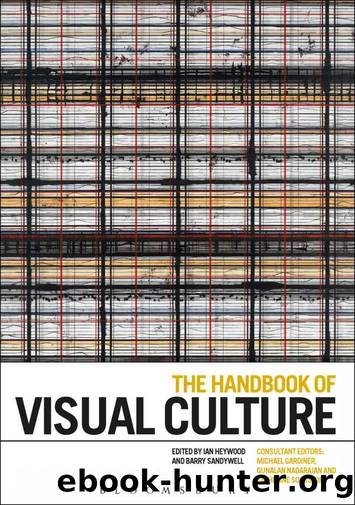The Handbook of Visual Culture by Ian Heywood

Author:Ian Heywood
Language: eng
Format: epub
Publisher: Bloomsbury Publishing
Published: 2014-01-21T00:00:00+00:00
16
Looking Sharp: Fashion Studies
MALCOLM BARNARD
Fashion and clothing construct, reproduce and challenge all kinds of identity and they do so visually and immediately. The meanings of the visual here, the meanings of what people are wearing, are quickly learned and readily understood by all members of all cultures: learning and understanding those meanings may even be said to be the conditions for membership of those cultures. So, for example within seconds of seeing or meeting someone we make a series of judgements concerning identity and culture, about who they are and whether we will have anything in common with them, on the basis of what they are wearing. Rarely, if ever, do we wonder what people mean by the things they wear or dismiss garments as meaningless: meaning and identity are constructed, negotiated and understood constantly in visual fashion. The centrality of fashion and clothing to the concerns of this collection (the concern with visuality, meaning, identity, society and culture), should not need emphasizing. Social and cultural identity and social and cultural status, including those identities and statuses that are to do with gender, class, sexuality and ethnicity, are constructed, negotiated and challenged visually, in and through what we wear. Similarly, our sense of self, and our understandings of our own bodies, are also produced and tested visually by the things with which we adorn, decorate, display, hide and protect our bodiesâfashion and clothing. In raising concerns such as these, fashion is at once an extremely ancient, a completely modern and a thoroughly postmodern phenomenon. What people wear has always constructed and indicated social and cultural status and what people wear is now part of a postmodern and globalizing economy in which the relation of identity to consumption is readily or functionally understood by almost everyone, even if not everyone is ready to critically analyse and explain that relation.
This chapter will include everyday clothing, or dress, as well as fashion in its account of fashion studies. It is possible to argue, as Adam Smith argued in the eighteenth century, that the term âfashionâ includes everything to which the concept of taste is relevant or may be applied and that it therefore includes music, poetry, architecture and furniture (Smith 2006: 194). It is also possible to argue, with Baudrillard in the twentieth century, that fashion includes all consumer goods and our own bodies, as well as the things that we wear (Baudrillard 1993: 87). Following Fernand Braudel (Braudel 1981: 328), Lars Svendsen goes so far as to wonder whether philosophy and even thought itself are ruled by the cycles of fashion and one does not have to be very cynical to begin to agree with him when he suggests that academics have their âinâ subjects and their âsexyâ approaches (Svendsen 2006: 15). And it would be possible to concentrate on what some people think of as âhigh fashionâ, expensive or exclusive items of clothing that are produced by high-status, high-profile and famously named designers. Such a version of fashion would include, but
Download
This site does not store any files on its server. We only index and link to content provided by other sites. Please contact the content providers to delete copyright contents if any and email us, we'll remove relevant links or contents immediately.
| Anthropology | Archaeology |
| Philosophy | Politics & Government |
| Social Sciences | Sociology |
| Women's Studies |
Cecilia; Or, Memoirs of an Heiress — Volume 1 by Fanny Burney(32413)
Cecilia; Or, Memoirs of an Heiress — Volume 3 by Fanny Burney(31824)
Cecilia; Or, Memoirs of an Heiress — Volume 2 by Fanny Burney(31807)
The Great Music City by Andrea Baker(31251)
We're Going to Need More Wine by Gabrielle Union(18951)
All the Missing Girls by Megan Miranda(15500)
Pimp by Iceberg Slim(14321)
Bombshells: Glamour Girls of a Lifetime by Sullivan Steve(13952)
Talking to Strangers by Malcolm Gladwell(13194)
Norse Mythology by Gaiman Neil(13172)
Fifty Shades Freed by E L James(13145)
For the Love of Europe by Rick Steves(12660)
Mindhunter: Inside the FBI's Elite Serial Crime Unit by John E. Douglas & Mark Olshaker(9164)
Crazy Rich Asians by Kevin Kwan(9147)
The Lost Art of Listening by Michael P. Nichols(7388)
Enlightenment Now: The Case for Reason, Science, Humanism, and Progress by Steven Pinker(7168)
The Four Agreements by Don Miguel Ruiz(6599)
Bad Blood by John Carreyrou(6520)
Weapons of Math Destruction by Cathy O'Neil(6116)
